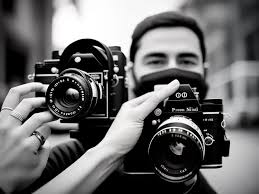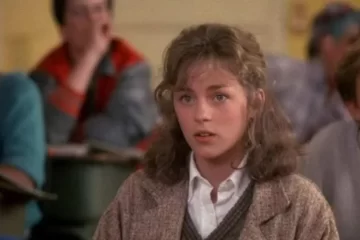I. Introduction
In the ever-evolving landscape of photography, where digital reigns supreme with its convenience and immediacy, there’s a quiet but steadfast resurgence of interest in film photography. In this digital age, where images can be captured and shared in an instant, the allure of film photography lies in its tangible, timeless quality – each frame carefully composed, captured, and developed, resulting in a unique masterpiece that cannot be replicated with a simple click of a button. One aspect of the film development photography process that is often overlooked is casting. Click here to learn more about how casting plays a significant role in the development process of films in this insightful article from Jacanswers.

A. Overview Of Film Photography Resurgence
Over the past decade, there has been a noticeable resurgence in the popularity of film photography. While digital cameras dominate the market with their advanced technology and convenience, a growing number of photographers are turning to film for its distinct aesthetic and process. From seasoned professionals to hobbyists and beginners, there’s a palpable nostalgia for the tactile experience of shooting with film – from loading the camera with a roll of film to the anticipation of seeing the developed negatives.
Film photography offers a slower, more deliberate approach to capturing images. Unlike digital cameras, where images can be instantly reviewed and deleted, shooting with film requires careful consideration of each frame, as every exposure counts. This intentional process encourages photographers to hone their skills, focusing on composition, exposure, and timing to create images that truly resonate.
B. Importance Of Understanding The Film Development Process
Central to the revival of film photography is the understanding and appreciation of the development process. Unlike digital photography, where images are processed and stored electronically, film photography involves a series of chemical reactions that transform latent images captured on film into tangible photographs. Understanding the intricacies of this process not only allows photographers to take full control of their creative vision but also fosters a deeper connection to the art form itself.
In an age where instant gratification is the norm, the patience and discipline required for development are a welcome departure. Each step – from preparing the film and selecting the right developer to meticulously timing the development process – demands attention to detail and a willingness to embrace the unknown. It’s a journey filled with both challenges and rewards, where mistakes are inevitable but often lead to unexpected discoveries.

II. The Filmy Development Process
In the realm of photography, mastering the art of film is akin to unlocking a treasure trove of timeless imagery. Whether you’re a seasoned photographer or an eager enthusiast, understanding the intricate process of developing film is essential for capturing the essence of moments with unparalleled authenticity.
A. Preparing For The Process
1. Gathering Necessary Equipment
Before embarking on your film journey, it’s crucial to assemble the essential tools of the trade. These include a developing tank, reels, thermometer, measuring cylinders, and a set of chemical solutions comprising developer, stop bath, and fixer. Additionally, ensure you have a dedicated space free from light contamination to execute the process seamlessly.
2. Setting Up a Darkroom (Optional)
While not mandatory, setting up a darkroom provides optimal conditions for controlling the development of the film environment. If you opt for a darkroom setup, invest in light-proof materials such as blackout curtains or foam weather stripping to seal windows and doors. This ensures minimal light infiltration, guaranteeing the integrity of your photographic materials.
B. Shooting With Film
1. Choosing the Right Film Type
The first step in the film development process begins even before you load your camera. Selecting the appropriate film type dictates the aesthetic and visual language of your photographs. Consider factors such as film speed (ISO), grain structure, and color rendition to align with your artistic vision and shooting conditions.
2. Understanding Exposure and Composition
In the realm of film photography, mastering exposure and composition is paramount. Unlike digital counterparts, film offers a finite number of exposures per roll, emphasizing the need for precision and intentionality. Familiarize yourself with exposure fundamentals, such as aperture, shutter speed, and ISO, to achieve optimal results. Furthermore, hone your compositional skills to frame subjects with artistry and finesse.
C. Developing The Film
1. Developing Chemicals and Equipment
Prepare your developing chemicals and equipment meticulously, adhering to recommended dilution ratios and safety protocols. Ensure adequate ventilation and protective gear, such as gloves and goggles, to minimize exposure to potentially hazardous substances. Familiarize yourself with the properties of each chemical and their respective roles in the development process.
2. Step-by-Step Development Process
a. Loading the Film onto Reels:
In a light-tight environment, transfer the exposed film from the camera onto development reels. Exercise patience and dexterity to avoid damaging the delicate emulsion layer.
b. Developing Times and Temperatures:
Maintain precise control over development times and temperatures to achieve consistent results. Refer to the film manufacturer’s recommendations or utilize a development chart to determine optimal parameters for your chosen film type.
c. Agitation Techniques:
Vigorous yet controlled agitation ensures even distribution of developer across the film surface, facilitating uniform development. Experiment with various agitation methods, such as inversions or constant rotation, to find a technique that suits your preferences.
III. Advanced Techniques And Tips
Film photography is a rich and dynamic art form that offers endless opportunities for experimentation and creativity. From pushing and pulling film to experimenting with different developers and embracing creative printing techniques, there’s no shortage of ways to push the boundaries of your craft.
A. Pushing And Pulling Film
Pushing and pulling film refers to the practice of intentionally overexposing or underexposing a roll of film during development to achieve specific aesthetic effects. This technique is particularly useful in low-light situations or when you want to enhance contrast and grain in your images.
When pushing film, you increase the ISO setting on your camera to expose the film to more light than it was designed for. This results in brighter images with increased contrast and grain, perfect for capturing dynamic scenes with dramatic lighting.
B. Experimenting With Different Developers
The developer used during the development pf film process plays a crucial role in determining the final look of your images. Different developers produce varying effects, from subtle shifts in tone to dramatic changes in contrast and grain.
Traditional developers, such as D-76 and HC-110, offer reliable results and are suitable for a wide range of film types. However, if you’re looking to explore more experimental techniques, consider experimenting with specialty developers like Rodinal or Pyro. These developers can produce unique effects, such as enhanced sharpness or increased film speed, adding an extra layer of creativity to your photography.

IV. Conclusion
The film development process is essential for any photographer looking to explore the timeless art of film photography. From the initial capture of light on film to the final print, every step of the process offers opportunities for creativity and expression. By mastering advanced techniques such as pushing and pulling film, experimenting with different developers, and embracing creative printing techniques, you can take your photography to new heights and unlock the full potential of the medium. To help understand the various options for the film process, it’s important to also understand the different types of TV operating systems and screen technologies.
Frequently Asked Questions (FAQ)
Q: What equipment do I need to start developing film at home?
A: Basic equipment includes a developing tank, reels, thermometer, measuring cylinders, and chemical solutions (developer, stop bath, fixer). Optionally, a darkroom or dark bag can aid in loading film.
Q: How do I load film onto development reels without a darkroom?
A: Use a dark bag or changing tent to load film into the reels. These light-tight enclosures allow you to work with film in a darkened environment, ensuring proper loading.
Q: What’s the difference between developing black and white film versus color film?
A: Black and white development of film is simpler and more forgiving, often requiring fewer steps and less precise temperature control. Color film demands exact temperature maintenance and additional chemical stages for accurate results.
Q: Can I reuse developing chemicals, or should I discard them after each use?
A: Most developers and fixers can be reused for multiple rolls of film, but their effectiveness diminishes with each use. Properly storing and replenishing chemicals helps maintain consistency in results.
Q: How do I troubleshoot common issues like under or overexposed negatives?
A: Underexposed negatives appear too dark and lack detail, while overexposed ones appear too light with loss of highlights. Adjust exposure settings for future shots based on these observations.



